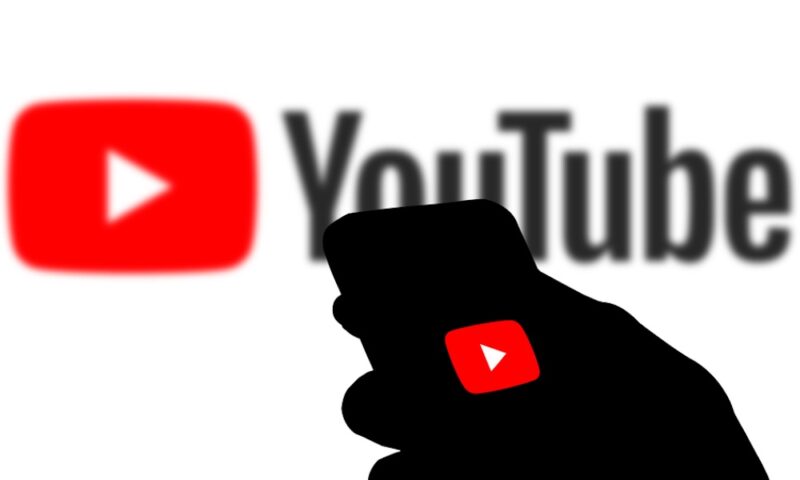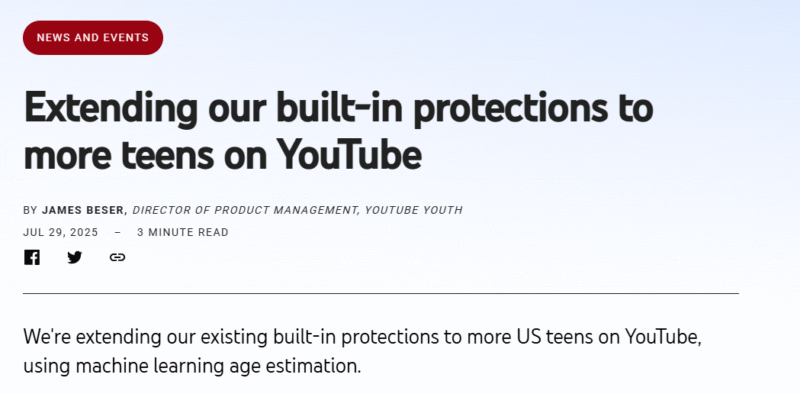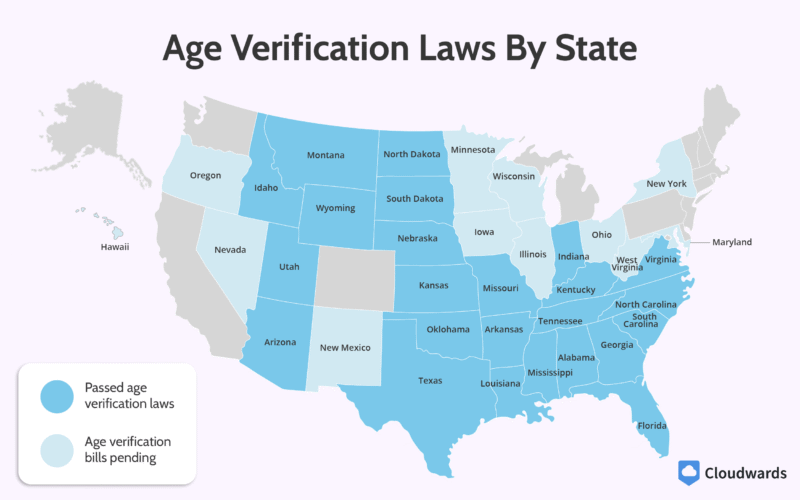YouTube to Introduce AI-Powered Age Verification in the US
The new system will use AI to determine whether an account belongs to a minor, requiring users to upload government ID to prove otherwise in the case of false positives.

With more and more U.S. states implementing age verification laws for social media and sites with adult content, YouTube is angling to get ahead of a potential federal law by implementing an AI-powered age verification system.
The system will look at factors like watch history and account age to determine whether the account holder is under 18 years old, according to YouTube’s statement. If an account gets flagged, users will have to upload government-issued ID or a credit card to override the decision.
Once flagged as a minor, the account will lose access to certain features. Most significantly, it will make it impossible for the account user to watch age-restricted videos. Additionally, autoplay and personalized advertising will be turned off and digital well-being tools (such as a watch-time profile, as well as break and bedtime reminders) turned on.
The roll-out of the new age-verification system will be gradual, with YouTube planning to implement it for a “small set of U.S. users” over the “next few weeks” before rolling out the features more widely at an undisclosed future date.

The announcement was met with overwhelming disapproval by online communities and YouTube users, with multiple reddit threads complaining about the decision and the official Google support thread full of criticism.
It’s worth noting that YouTube is no stranger to implementing age-verification measures. In 2020, the service implemented a system to verify users’ ages in Europe to comply with the EU’s “Audiovisual Media Services Directive”, and in 2022 in Australia following the “Online Safety (Restricted Access Systems) Declaration” of that year.
That said, it’s not yet clear if this new system rolling out for U.S. users will be the same as the one introduced for European and Australian users.
US Age Verification Laws & Social Media Bans for Teens Gaining Steam
Although there’s still no federal age verification law, 13 U.S. states have passed laws introducing some kind of restrictions on social media use by minors.
- Arkansas: SB 396 requires social media companies that make over 100 million dollars per year to verify the age of new users and obtain parental consent for users under the age of 18. The law is currently not implemented as it’s under an injunction following a challenge by advocacy group NetChoice.
- California: SB 976 requires online platforms to verify the age of users and to not show “addictive feeds” to anyone under the age of 18 unless parental consent is given. The law is currently under a judicial injunction pending a decision by the 9th Circuit Court of Appeals following a challenge by advocacy group NetChoice.
- Florida: HB 3 bans anyone under the age of 14 from using any social media platform. The law took effect on Jan.1, 2025, but was blocked by a preliminary injunction on June 3, 2025 after yet another legal challenge by NetChoice.
- Georgia: Act 463 requires all platforms to verify the age of its users and acquire parental consent for any users under the age of 16. The law is currently facing a legal challenge, but no injunction has been granted, meaning it is currently in effect.
- Louisiana: SB 162 demands that all platforms verify the age of its users, acquire parental consent for users under the age of 16, and block users under the age of 16 from messaging adults. The law also prohibits personalized advertising and the collection of “unnecessary personal information” on users under the age of 16. Once again, the advocacy group NetChoice has challenged the law in court, but no injunction has been granted.
- Mississippi: HB 1126 requires companies to make a “commercially reasonable” effort to verify users’ ages and get parental consent for anyone under the age of 18 on account creation. The law also requires that personal data collection of known minors be limited and that services “prevent and mitigate” content deemed harmful such as posts relating to eating disorders, substance abuse and illegal activity. The act was previously under a preliminary injunction, but this was lifted April 17, 2025, meaning the law is in effect.
- Nebraska: LB 383 requires social media companies to verify the age of all users and requires parental consent for anyone under 18 years of age. The law took effect on July 1, 2026, after having been delayed seven months.
- New York: S7694A requires social media platforms to verify the age of its users and not show “addictive feeds” to users under the age of 18, as well as block notifications for these users between midnight and 6:00 a.m. The law will take effect 180 days after the Attorney General of New York provides rules on how to follow the law, which is yet to happen.
- Ohio: HB 33 demands that social media and online gaming platforms verify the age of its users and acquire parental consent for any user under the age of 16. The law is currently under a preliminary injunction awaiting the results of a legal challenge by NetChoice.
- Tennessee: HB 1891 requires that social media companies verify the age of any users within 14 days of accessing their account. If the user is under the age of 18, the law demands that the company acquires parental consent. The law is facing a legal challenge by NetChoice, but no preliminary injunction has been issued.
- Texas: HB 18 requires that social media companies acquire parental consent for users under the age of 18 and that a user’s age must be verified in a “commercially reasonable” manner. The law has been under a preliminary injunction blocking its implementation since August 2024, pending yet another legal challenge by NetChoice.
- Utah: SB 152 requires that platforms with more than 5 million users verify the ages of all account holders and acquire parental consent for any user under the age of 18. Furthermore it prevents minors from direct-messaging any account that wasn’t already linked, bans targeted advertising to minors, and requires that platforms block access for minors between 10:30 p.m. through 6:30 a.m. Additionally, the separate HB 311 provides a way for parents to sue social media companies for causing “addiction” and harm to minors. The law is currently not being enforced, as it’s under a preliminary injunction pending the result of a legal challenge by NetChoice.
- Virginia: SB 854 requires social media platforms to verify users’ age and limit the time spent on the platform to one hour per day unless parents provide consent. The law is slated to take effect on Jan.1, 2026.
Beyond these 13 states that have already passed social media age verification laws, a further 27 states have introduced age verification bills in their state legislatures. In the realm of online adult content, even more states have passed legislation restricting access.

Worldwide Age Verification Laws
Mandatory age verification and social media bans for minors isn’t a strictly American phenomenon either.
The U.K. passed its Online Safety Act in 2023, which came into effect on July 25, 2025 and requires all users to verify their age with a legal ID when accessing social media or pornography.
The U.K. law has already had unintended consequences, with social media companies reportedly blocking content related to the conflicts in Ukraine and Gaza in an effort to avoid potential punishment.
Australia went even further, with its Online Safety Amendment outright banning users under the age of 16 from various social media platforms, like Facebook, Instagram, reddit, Snapchat, TikTok and X. YouTube was originally granted an exception from the law, but this was reversed on July 30, 2025, following advice from the country’s eSafety commissioner.
France has also implemented similar laws, passing the Digital Majority law in 2023 requiring social media companies to acquire parental consent for users under the age of 15.
France’s President Macron has also been pushing the EU to implement a blanket ban on social media for anyone under the age of 15, pledging to implement a ban in France if the EU doesn’t take action.
Massive Privacy & Censorship Implications
Although there is support across the political spectrum for limiting minors’ access to social media and adult content, tech companies and advocates for digital privacy and free internet are ringing the alarm bells.
Apple has called the U.K.’s Online Safety Act a “serious threat” to end-to-end encryption, and Wikipedia has threatened to restrict access for U.K. users.
The laws also set the stage for a segmented and tiered internet, where access to certain sites or services depend on the users’ geographical location, severely undermining the principle of a free and equal internet.
Additionally, requiring users to upload pictures of their IDs creates a serious threat to privacy, both from the companies handling the verification and also from potential attackers who would see any such database as a gold-mine of personal data.
A recent example of how this could go poorly was with Tea Dating Advice, an app where women share feedback about men they’ve dated; because it’s for only women, the app requires gender verification for users. In July, after angry 4chan users began calling for someone to hack and leak information about app users, exactly that happened.
In two separate breaches, hackers accessed thousands of Tea members’ images, posts and comments, including images of women holding photo identification for verification — despite Tea’s privacy policy saying these images are “deleted immediately” after authentication. Acts of revenge against Tea users have included doxxing their locations, social-media handles and phone numbers.
Circumventing YouTube’s New System
As of yet, it’s unclear whether it will be possible to circumvent YouTube’s new age verification system. Users may be able to use a VPN to change their account’s location, but this may be challenging since Google requires that users provide a local phone number to verify their physical location.
Here at Cloudwards we plan to thoroughly test the new system once it rolls out, and if there’s a way to get around the new system we’ll be sure to cover it extensively in our guides. If you’re worried that you might be affected by the new system, make sure to subscribe to our newsletter to stay up to date on the implementation and any potential workarounds.

